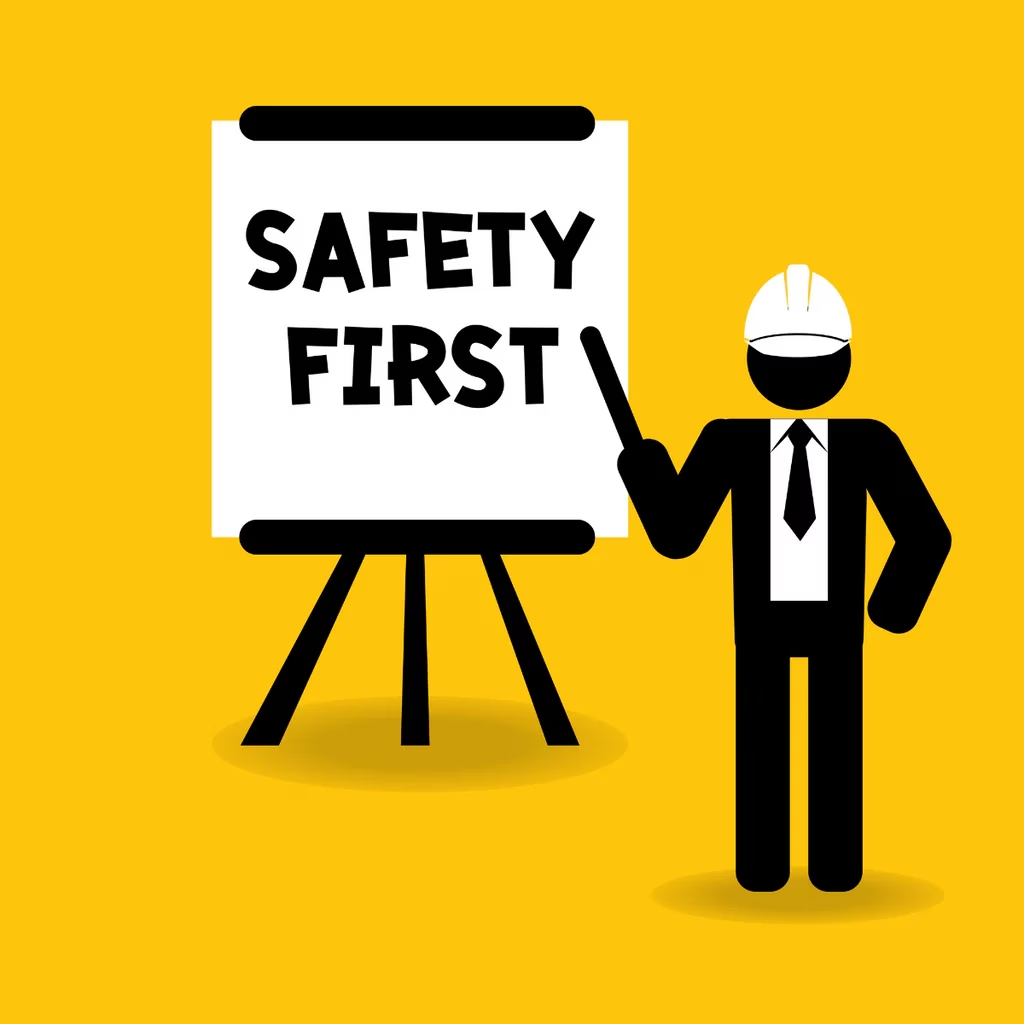
Safety Committees & Meetings
Oregon-OSHA Requirements
Division 4, Subdivision C: Safety Awareness
If your business has 11+ employees at any given time during the year, you are required to have a Safety Committee.
If your business has 10 or fewer employees at any given time during the year, you are required to have safety meetings but not an official safety committee. Employers can choose to have a Safety Committee even if not required to.
If you do not have a Safety Committee, then ALL EMPLOYEES must be in attendance at your safety meetings. If you have a committee, then membership depends on how many workers you have (see below).
Are you a labor contractor?
You must have a safety committee or meetings based on the number of workers you direct and control.
Do you have non-English speaking workers?
You must make sure that your workers who don’t speak or read English understand your safety information. You can provide that information in the language they speak. You can also use pictures or other visual aids.
Membership depends on how many workers you have:
- 20 or fewer workers: The committee must have at least two members.
- More than 20 workers: The committee must have at least four members.
Members should represent the major activities of your business.
A safety committee must:
- Establish procedures for doing quarterly safety and health inspections to identify any workplace hazards that could injure workers. Those doing inspections must be trained in hazard identification.
- Meet at least monthly – except when you do quarterly inspections.
- Review all quarterly safety and health inspection reports and recommend how to eliminate identified hazards.
- Work with management to establish procedures for investigating all safety incidents, accidents, work-related illnesses, and fatalities. Investigators must be trained in the principles of accident investigation. All work-related lost-time injuries must be investigated.
- Evaluate all investigation reports and recommend ways to prevent incidents from happening again.
- Set guidelines for training safety committee members.
- Evaluate your workplace’s safety and health programs.
Your safety committee must ensure that workers:
- Are aware of the committee and know who the members are.
- Know when the committee meets.
- Know how the committee shares information with management and other workers.
- Know they have the right to have their safety and health concerns heard by the committee.
- Know how and where to report safety and health concerns, incidents, and accidents.
Management must:
- Pay committee members their regular rate of pay for attending meetings, trainings, inspections, and other safety committee functions.
- Make sure committee members have access to the safety committee rule (437-004-0251) and all other Oregon OSHA rules that apply to their work.
- Respond to safety committee recommendations within a reasonable time.
The safety committee must have an equal number of management-selected and worker-elected (or volunteer) members. If everyone on the committee agrees, there can be more worker-elected members.
- Management can select a supervisor or a worker to represent them.
- Workers can volunteer or elect any co-worker to represent them.
- Members should serve a minimum of one year, when possible.
- A majority of members must agree on a chairperson.
Members need to be trained:
- On the committee’s purpose and operation.
- How to identify hazards.
- How to investigate accidents.
See Additional Resources below for hazard recognition training resources.
If you have workers at more than one geographic location, you can have a central safety committee if the locations are close enough to ensure that workers:
- Are aware of the committee and know who the members are.
- Know when the committee meets.
- Know how the committee shares information with management and other workers.
- Know they have the right to have their safety and health concerns heard by the committee.
- Know how and where to report safety and health concerns, incidents, and accidents.
And:
- The central committee represents the safety and health concerns of all workers at all locations.
Keep a record of each safety committee meeting that includes:
- The meeting date
- Names of those attending
- All committee reports, recommendations, and evaluations
- The date management agrees to respond to recommendations
Keep these records for at least three years and make them available to workers who request them.
Safety meetings must:
- Include all available workers.
- Include at least one management representative.
- Be held on company time with workers paid at their regular rate of pay.
- Occur at least monthly.
- Seasonal workers can attend safety meetings.
Your safety meetings must ensure that workers:
- Know about the meetings and know when and where they are held.
- Know how meeting information is shared between management and other workers.
- Know they have a right to have their safety and health concerns heard at the meetings.
- Know how and where to report safety and health concerns, incidents, and accidents.
Safety meetings must:
- Cover safety and health issues relevant to your workplace.
- Cover reports and recommendations from quarterly workplace safety inspections and injury investigations. (Have a competent person do quarterly safety inspections to identify any workplace hazards that could injure workers. Be sure to investigate all work-related lost-time injuries and illnesses.)
- Give workers an opportunity to ask questions, bring up safety and health concerns, and make suggestions.
Make sure that information is presented so that all workers can understand it.
Keep a record of each safety meeting that includes:
- Meeting date
- Names of those attending
- Topics discussed
If all your workers attend a safety meeting, just record the meeting date and the names of those who attended.
Keep the records for at least three years and make them available to workers who request them.

Printable Safety Committees and Meetings Summary
A printable PDF summary of OR-OSHA’s safety committee and safety meeting rules.

OR OSHA Division 4 Rule Text: Safety Awareness
Read OR-OSHA’s Division 4 rules about safety awareness.
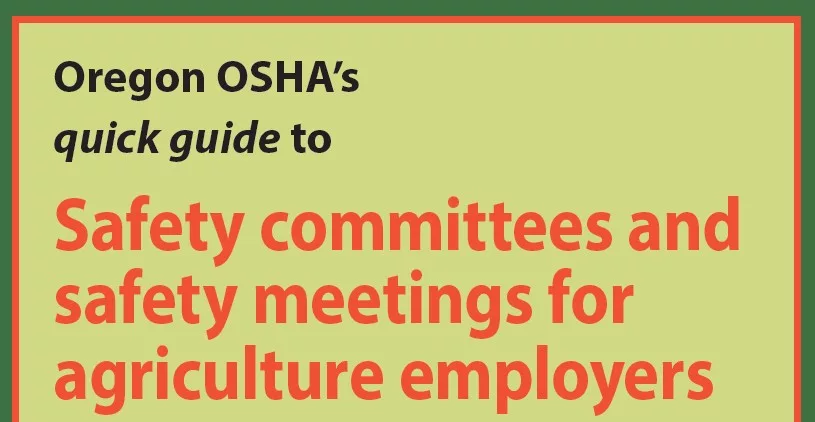
Safety Committees/Meetings for Agricultural Employers
Read OR-OSHA’s Quick Guide to safety committees and meetings for agricultural employers.
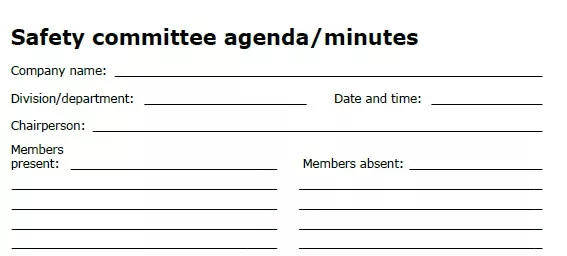
Safety Committee Agenda and Minutes Template
SAIF templates for committee agendas and meeting minutes.

Safety Committee Fact Sheet
Read OR-OSHA’s fact sheet about safety committees and safety meetings for ag employers.
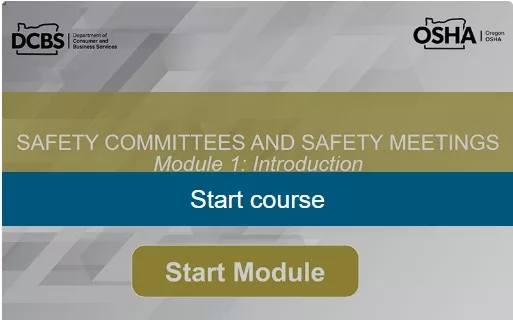
Safety Committees/Meetings Online Course
Watch OR-OSHA’s online course to learn what the differences are between a committee and a meeting, the rule requirements, and the different aspects of the rule for specific industries and divisions.
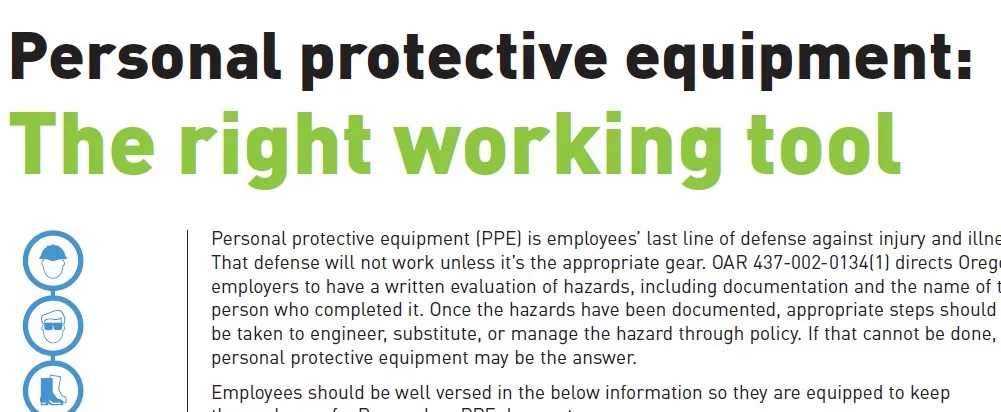
Safety Talk One-Page Trainings
Check out SAIF’s library of one-page safety and health trainings for safety meetings, tailgate talks, or when you want to briefly cover a safety topic. Each training includes activities to learn more.
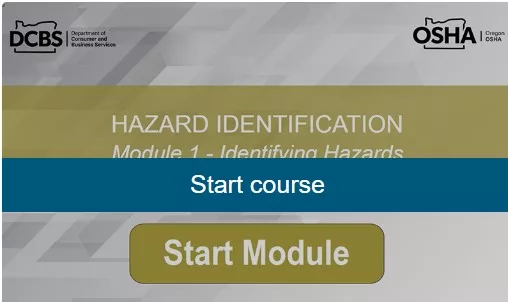
Online Hazard Identification Course
This online course from OR-OSHA instructs you on how to identify hazards, conduct safety inspections, analyze hazards and write inspection reports.
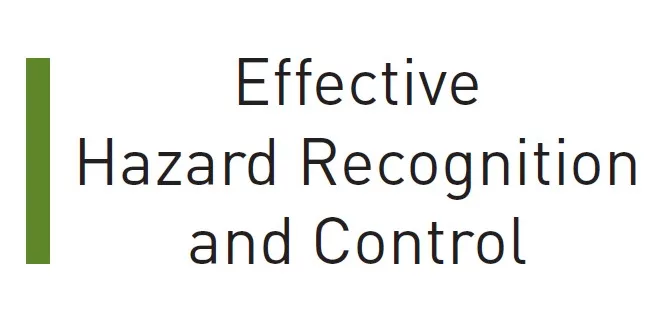
Guide to Effective Hazard Identification & Control
This comprehensive guide is designed by SAIF to help employers conduct workplace inspections, identify hazards, and improve safety.
